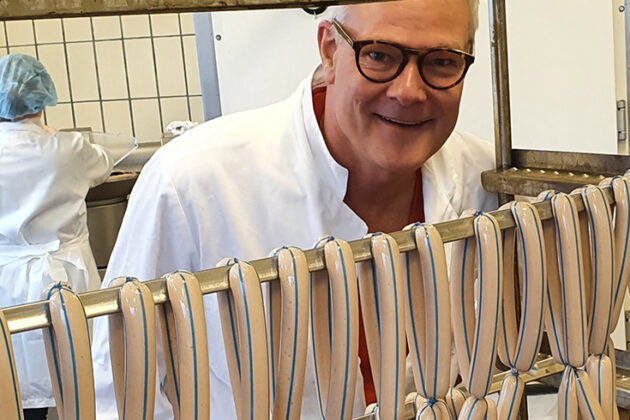We need to eat more of the whole animal

“Organs and blood from slaughtered animals can be utilised far more than what is currently being done, leading to more sustainable production and potentially improved consumer health”, says Nofima scientist Rune Rødbotten.
Animal-based products contain several important nutrients which humans need. Our body needs to be supplied with complex and important vitamins such as B12 every once in a while, and meat is the best source. If you have a vitamin B12 deficiency, you can develop serious health problems.
“We don’t need to eat animal products every single day, but they are a source of many essential nutrients that our body needs to function optimally. From a historical perspective, the high intelligence of humans is directly linked to our animal-based diet. But when we do slaughter animals, I am a firm believer that we should use as much of the animal as possible”, says Nofima scientist Rune Rødbotten.
Hashed lungs – a rare sight on Norwegian dinner tables
Less than 50 per cent of a cow is meat; the rest is bones, offal and blood – residual raw material which is currently mainly used for animal feed, but if we look back a few decades, we utilised far more of this raw material in our diet.
“There used to be more of a culture for making culinary use of the entire animal, but with our relatively newfound riches, we have moved away from food made from organs and blood. If consumers only want the finest cuts of meat, we miss out on a lot of healthy and traditional food. Nofima is now looking into how we could start using these resources more, which would be beneficial from a health and sustainability perspective. And I’m all for that”, says Minister of Agriculture and Food, Olaug Bollestad (Christian Democratic Party).
Indeed, lungemos or hashed lungs is hardly present on Norwegian dinner tables in 2020. Liver and blood puddings are also a rare sight.
Rødbotten believes it is possible to increase the use of organs and blood as a supplementary ingredient along with other meat-based raw materials in food products. Of course, the most important thing is that the product should taste good – but if it also offers proven health benefits, there’s no reason why consumers shouldn’t embrace it.
“We need to show that food products containing blood and innards can provide health benefits, and that it is more environmentally sustainable to utilise more of the animal for human consumption. Using a big portion of the slaughtered animal for animal feed is not sustainable in the long run.”
Tasty and good for your health
“It is well known and well documented that we humans need iron from our diet. Iron is, among other things, necessary for transporting oxygen throughout the body. Blood is a key source of iron, which is why we are working on different projects where the goal is to use blood in new products,” says Rødbotten.
The question is then whether health benefits and more sustainable utilisation are strong enough drivers to make consumers want to eat blood – even if it is only a small percentage of a final product.
“We know that many are concerned with both health and sustainability, but consumer studies also show that taste is the determining factor for whether consumers will repeat their purchase of a given food product. So if we are able to develop food products that contain blood, lungs, liver or heart, and they have an appealing taste, health and environmental sustainability could be used as additional selling points.”
The industry is interested
In recent years, the meat industry has shown a greater interest in exploiting these residual raw materials for other purposes than animal feed.
“In order for the industry to be part of this, consumers need to buy the products. The blood and innards must simply provide better profitability when used as human food instead of animal feed, but creativity, deeper insights and new knowledge are required to find the best solutions for this.
The reindeer industry is a good example. They have a different culture of using the whole animal, and have been better able to sell this even to modern, privileged consumers.
“There is no doubt this is a trend now. If the industry can market this initiative with an emphasis on health and sustainability, that’s something people like to hear. We see that the meat industry is willing to change, and we believe the consumers are ready to follow suit, but we as a research community need to provide proper documentation as evidence first”, he says.
Contact person
Topics
Meat
